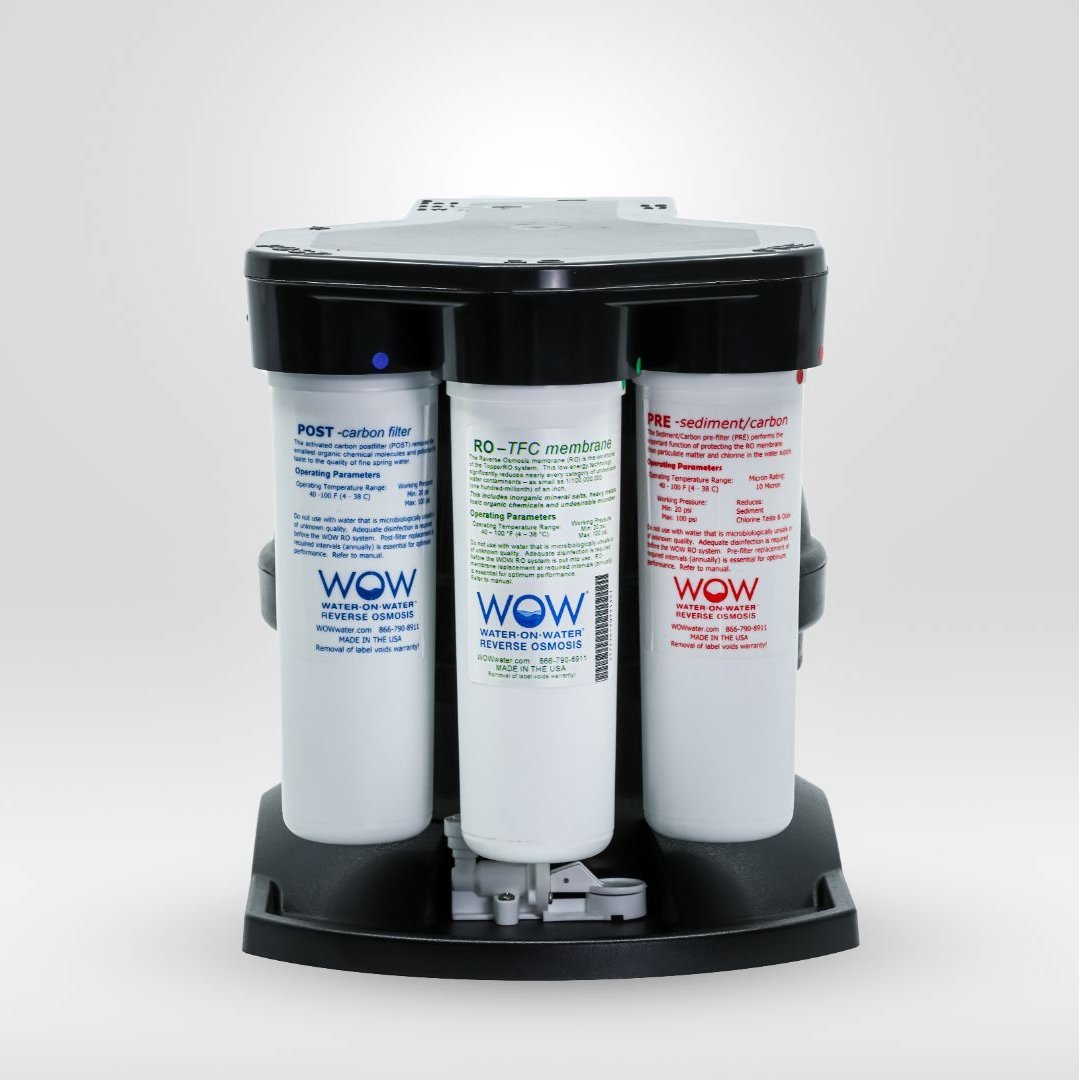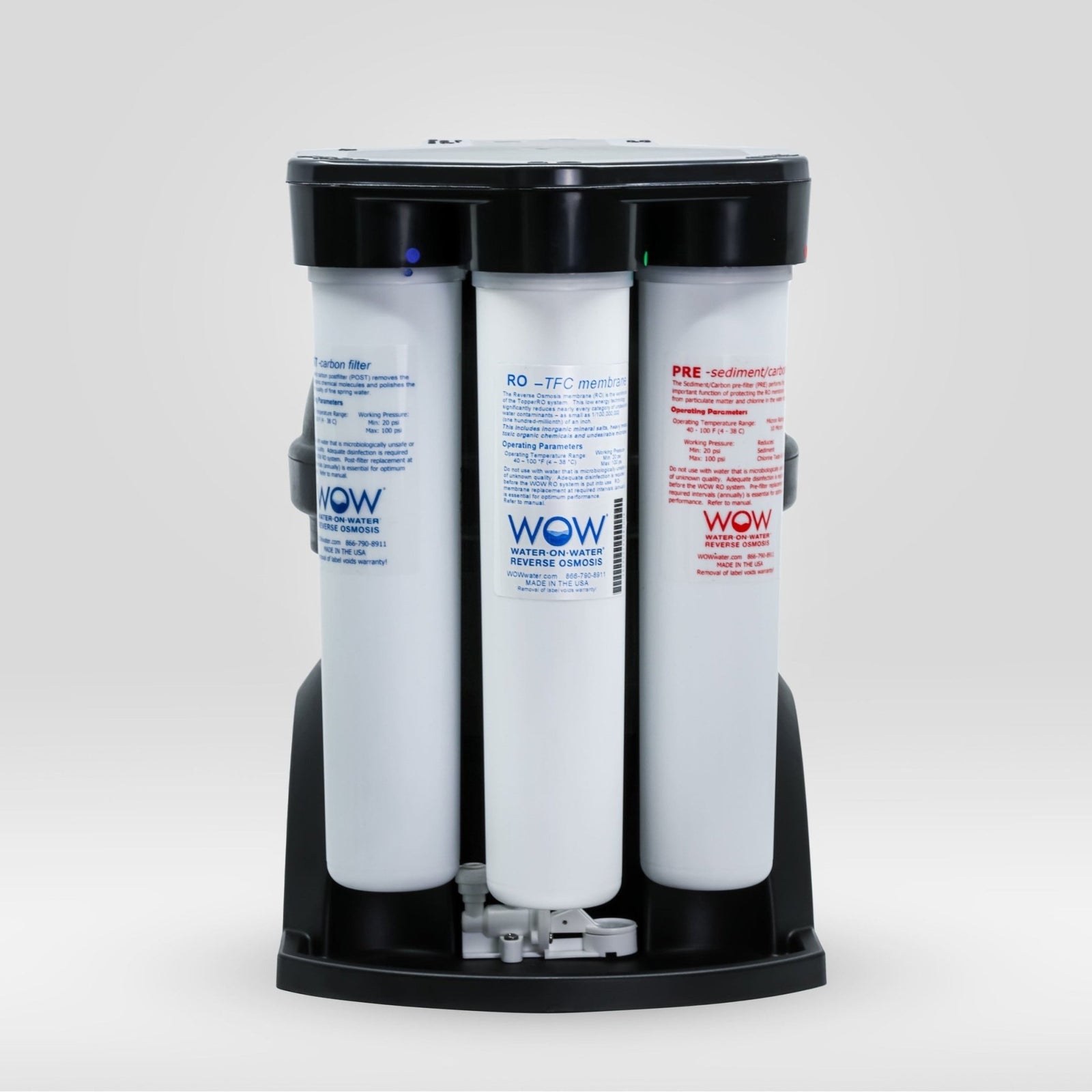Chronic exposure to chemicals in drinking water poses a serious health risk. PFAS (per- and polyfluoroalkyl substances) are of particular concern due to their persistence in the environment and the human body. Even at low concentrations, these industrial chemicals can cause adverse health effects, including hormone disruption, increased cancer risk, and weakened immune systems. Protection against these substances requires targeted measures.
What are PFAS and why are they dangerous in our drinking water?
PFAS (per- and polyfluoroalkyl substances) are a group of more than 4,700 synthetic chemicals that have been used in countless industrial applications and consumer products since the 1940s. They are also called "perpetual chemicals" because they hardly break down in the environment or in the human body. This extreme persistence makes PFAS particularly concerning when they end up in our drinking water.
The chemical structure of PFAS—with strong carbon-fluorine bonds—makes them water-, grease-, and dirt-repellent. That's why they're used in non-stick coatings, water-repellent clothing, food packaging, and fire-fighting foam. But it's precisely these properties that cause them to accumulate in our bodies and the environment.
Market research shows that 62% of Dutch people recognize that keeping their tap water sufficiently clean is becoming an increasing challenge. Our soil is becoming increasingly polluted, which is also putting pressure on water quality.
What health effects are associated with long-term PFAS exposure?
Scientific research has linked several health risks to chronic exposure to PFAS through drinking water. The most concerning effects are:
- Increased cancer risk - Kidney and testicular cancer in particular are associated with PFAS exposure
- Immune system disruption - Decreased antibody response to vaccinations
- Hormone disruption - PFAS can disrupt thyroid function and hormone balance
- Liver problems - Elevated liver enzymes and fat accumulation in the liver
- Developmental Effects - Lower Birth Weight and Disrupted Development in Children
- Elevated cholesterol - Higher levels of cholesterol in the blood
The health risks can be significant, especially for vulnerable groups such as pregnant women, young children, and people with weakened immune systems. The effects of PFAS are often subtle and only manifest after prolonged exposure, making it difficult to establish a direct cause-and-effect relationship.
How does PFAS end up in our drinking water?
PFAS contamination in drinking water occurs via various routes:
- Industrial discharges - Factories that produce or use PFAS can discharge these substances into surface water
- Use of fire-fighting foam - Especially on military bases, airports and fire training grounds
- Landfills - Leakage from waste disposal sites where PFAS-containing products have been dumped
- Wastewater treatment plants - Conventional treatment methods do not effectively remove PFAS
- Atmospheric deposition - PFAS can be transported through the air and deposit in water
Most of the drinking water in the Netherlands is extracted from groundwater, the rest from surface water. Both sources can become contaminated with PFAS. Surface water is contaminated most quickly, but groundwater is also vulnerable because pesticides and toxins seep into the soil. As a result, water companies are forced to drill ever deeper for purer groundwater.
What standards apply to PFAS in Dutch drinking water?
Regulations regarding PFAS in drinking water are constantly evolving. In the Netherlands, the RIVM (National Institute for Public Health and the Environment) has recommended tightening the standard for the total amount of PFAS in drinking water. The European Union is developing new guidelines within the Drinking Water Directive that will impose stricter limits.
The current situation is characterised by:
| Agency | Standard/Recommended value |
|---|---|
| RIVM (Netherlands) | Strict advisory values for specific PFAS |
| European Union | Tightened standards in development |
| WHO | Guidelines for some PFAS compounds |
Experts agree that there is no safe lower limit for PFAS exposure, as these substances accumulate in the body and can be harmful even at very low concentrations. This makes setting standards complex.
What can you do to reduce your exposure to PFAS through drinking water?
There are several measures you can take to limit your exposure to PFAS through drinking water:
- Install a water filtration system - Not all filters effectively remove PFAS. Systems with reverse osmosis technology, such as our The Source system, remove up to 99% of harmful substances, including PFAS.
- Test your water - Use a TDS meter to get an indication of the amount of dissolved solids in your water
- Stay informed - Follow water quality reports in your region
- Use filtered water - Not just for drinking, but also for cooking and food preparation
Our water filter system, The Source, is IAMPO NSF/ANSI 58 certified, meaning it's safe and effective at removing harmful substances. It also produces up to 500% less wastewater than traditional systems, making it a sustainable choice.
Did you know: Most of us drink about one liter of tap water a day, and for those who care about their health, it's even recommended to double that. So it's even more important to know what's in that water!
What are the most important insights about PFAS in drinking water?
PFAS pose a serious threat to our health when they enter our bodies through drinking water. Their persistence and widespread presence make it a complex problem that requires multiple solutions.
Key points to remember:
- PFAS hardly break down and accumulate in the body
- Even low concentrations can cause health risks in the long term
- Conventional water purification does not sufficiently remove PFAS
- Advanced filter systems such as reverse osmosis provide effective protection
At PureAqua, we're passionate about providing clean and safe drinking water. Our The Source water filter system offers a reliable solution for removing PFAS and other harmful substances from your drinking water. Because clean, pure drinking water should be a given for everyone.








